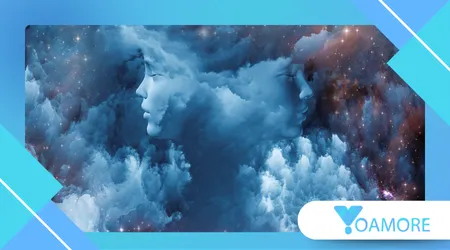How Dreams Are Interpreted as Omens Around the World

From the very first breath of dawn, dreams are interpreted as omens in cultures across the globe, blending mysticism with deeply rooted beliefs that shape decisions, rituals, and even destinies.
Anúncios
This human tendency to seek meaning in the mysterious realm of dreams reflects our eternal need to connect the known with the unknown.
Whether you dream of flying over oceans or being chased by shadows, someone, somewhere, believes that your dream carries a message.
This article explores how different cultures view dreams as prophetic or symbolic.
You will find historical traditions, modern psychological interpretations, recent statistics, symbolic comparisons, and real-life implications.
Anúncios
Two credible external sources are linked for those who wish to delve deeper.
The Global Fascination with Prophetic Dreams
Why do so many people still believe that dreams hold messages about the future? Perhaps it’s because dreams bypass rational filters, giving us raw emotional signals.
Across history, dreams are interpreted as omens not out of superstition, but because they offer structure to the unknown.
In many cultures, dreams aren’t private or random—they’re public codes waiting to be deciphered.
In 2023, a YouGov survey revealed that 31% of adults in the U.S. believe dreams can predict future events, up from 26% in 2019.
This rising interest suggests that even in hyper-rational societies, symbolic thinking continues to resonate.
While science dominates the headlines, symbolism remains in the margins, quietly shaping how people make decisions.
Also read: Cottagecore to Goblincore: The Evolution of Online Subcultures
When Dreams Steered Kingdoms and Wars

Ancient civilizations treated dreams as strategic tools. In Mesopotamia, dream tablets carved in cuneiform contained interpretations for scenarios like seeing a flood or a lion.
These tablets were not decorative—they influenced state decisions.
Egyptians documented dream analysis in texts like the Chester Beatty Papyrus, where each dream scenario came with its own interpretation and consequence.
Dreaming of a crocodile? Depending on the direction it swam, it could signify protection or betrayal. Their belief that dreams came from gods meant they weren’t taken lightly; priests specialized in their decoding.
Similarly, the Zhou Li, a Confucian administrative manual, appointed dream interpreters in royal Chinese courts.
Here, dreams reflected not only divine will but societal harmony. The appearance of fire, water, or a dragon could alter agricultural planning or military movement.
+ Tree Worship and Its Connection to Superstitions
Symbolism Rooted in African Spirituality
Across African cultures, dreams are not separated from reality. The Yoruba people consider dreams as direct communication from ancestors or deities.
If a person dreams of a snake in still water, for example, they may be urged to perform protective rituals or consult a babalawo (diviner).
There is little standardization in interpretation. Meaning depends on the dreamer’s role in society, the tone of the dream, and the broader context.
Unlike in Western approaches, there’s a dynamic interplay between communal memory and personal vision.
Dreams often guide social behavior. For instance, someone might delay travel or postpone marriage if a dream indicates unrest.
In many societies, dreams are interpreted as omens to prevent conflict and maintain spiritual balance.
+ Cultural Beliefs About the Moon: From Werewolves to Harvest Rituals
Latin American Duality: Faith Meets Ancestral Lore
Latin American interpretations of dreams reflect colonial, Catholic, and Indigenous roots.
While Catholicism offers religious symbolism (like angels representing divine communication), Indigenous traditions bring earth-bound interpretations.
A river might suggest rebirth in Catholicism, but in Quechua tradition, it could symbolize ancestral guidance or unresolved grief.
In rural Peru, ayahuasca ceremonies frequently lead to symbolic dreams. Shamans interpret these not as hallucinations but as communications from nature or spirit realms.
After a session, a person dreaming of a jaguar might be told to confront an internal fear or challenge a real-world authority.
The dual nature of belief—rooted in both colonizer and native spiritualities—makes Latin America a fascinating case of how dreams are interpreted as omens, not through contradiction but through fusion.
Dreams in the Digital and Scientific Age
Modern neuroscience doesn’t ignore dreams; it reframes them. According to the International Association for the Study of Dreams, dreams may help regulate emotions and consolidate memories.
Dr. Rosalind Cartwright’s research emphasizes that dreams can function as emotional simulations, preparing individuals for real-life outcomes.
This doesn’t strip dreams of symbolic meaning. Instead, it offers a layered view: the brain as both a storyteller and a sensor.
In this sense, dreaming about falling might not foretell danger, but reveal inner instability or fear of losing control.
On platforms like Reddit or TikTok, people share and decode dreams collectively.
This return to communal dream interpretation mimics ancient practices, proving that even today, dreams are interpreted as omens in evolving yet familiar ways.
Symbolic Diversity: One Image, Many Worlds
Below is a table that showcases how one common dream symbol is interpreted across various cultures:
| Dream Symbol | Culture | Interpretation | Omen Type |
|---|---|---|---|
| Snake | Yoruba (Nigeria) | Spiritual warning or protection | Depends on behavior |
| Hindu (India) | Kundalini energy awakening | Positive transformation | |
| Western | Deceit or danger | Negative | |
| Amazonian Tribes | A spirit guide | Neutral or divine |
This symbolic diversity shows how personal and collective experiences shape interpretation. What terrifies one culture might inspire another.
It’s also a reminder of why no dream dictionary can truly decode every vision.
When Dreams Shape Actions: Real-World Impact
In 2022, a Turkish airline mechanic chose to delay a plane’s inspection due to a vivid dream of engine failure.
Hours later, a scheduled check revealed turbine cracks. His intuition, sparked by a dream, likely prevented disaster.
Here, dreams are interpreted as omens not mystically, but operationally—a modern echo of ancient instincts.
In Japan, following the 2011 tsunami, a non-profit called YumeWatch collected thousands of post-disaster dreams from survivors.
Many described flood imagery, metallic sounds, or shadowy waves before the event. These dream archives are now used to enhance community disaster preparedness.
Whether these are coincidences or subconscious signals, they influence real public policy.
Religion and Revelation: Faith in the Unseen
In Islam, dreams are considered part of divine prophecy. The Prophet Muhammad received many key messages through dreams.
Even today, Muslims may seek guidance from scholars or Sufi masters when they experience dreams involving light, flight, or specific Quranic symbols.
Christian interpretations vary. While Catholic and Orthodox traditions honor biblical dreamers like Joseph and Daniel, some Protestant groups downplay dreams as irrational.
This inconsistency reflects broader tensions between reason and faith. Still, countless believers turn to prayer after symbolic dreams, trusting that they mean something bigger.
In Hinduism, dreams are woven into the karmic cycle. Dreaming of death might be a metaphor for rebirth or transition, not finality.
In these traditions, dreams are interpreted as omens, but omens of change, not necessarily doom.
Cultural Continuity in a Fragmented World
Even as societies globalize, dream interpretation remains culturally specific. While smartphones and AI tools analyze REM patterns, elders in rural communities still sit down with family members to decode dreams by candlelight.
This coexistence of old and new suggests that technology won’t erase symbolic thinking. Rather, it might enhance it.
Tools may help us recall and record dreams, but meaning still comes from within—or from the community that interprets them.
Dreams act like emotional GPS systems. They may not map reality precisely, but they show us where we need to look.
Final Thoughts: The Persistence of Symbolic Meaning
Despite advances in science, big data, and predictive analytics, people still turn to dreams for answers. Why?
Because dreams feel deeply personal, and they appear unfiltered. They allow us to make sense of chaos when logic fails.
As Carl Jung famously noted, “Who looks outside, dreams; who looks inside, awakes.” But perhaps in 2025, we’re doing both. We’re dreaming and interpreting, looking both inward and outward for direction.
To explore more on dream research and sleep science, visit the Sleep Foundation’s official resource.
FAQ: Frequently Asked Questions
1. Are dream interpretations the same in all cultures?
No. Interpretations vary widely. A snake in one culture may mean danger; in another, transformation.
2. Can science explain dreams completely?
Science explains the function of dreaming but not always its meaning. Psychology and neuroscience are still evolving fields.
3. Should I be concerned if I dream about death or danger?
Not necessarily. These symbols often represent transitions or emotional states rather than literal outcomes.
4. Are there professionals who interpret dreams today?
Yes. From psychologists to spiritual advisors and traditional healers, many people consult experts for dream analysis.
5. Is there any harm in believing that dreams carry meaning?
If interpreted with balance, it can be insightful. But overdependence on symbolic thinking should be avoided.
